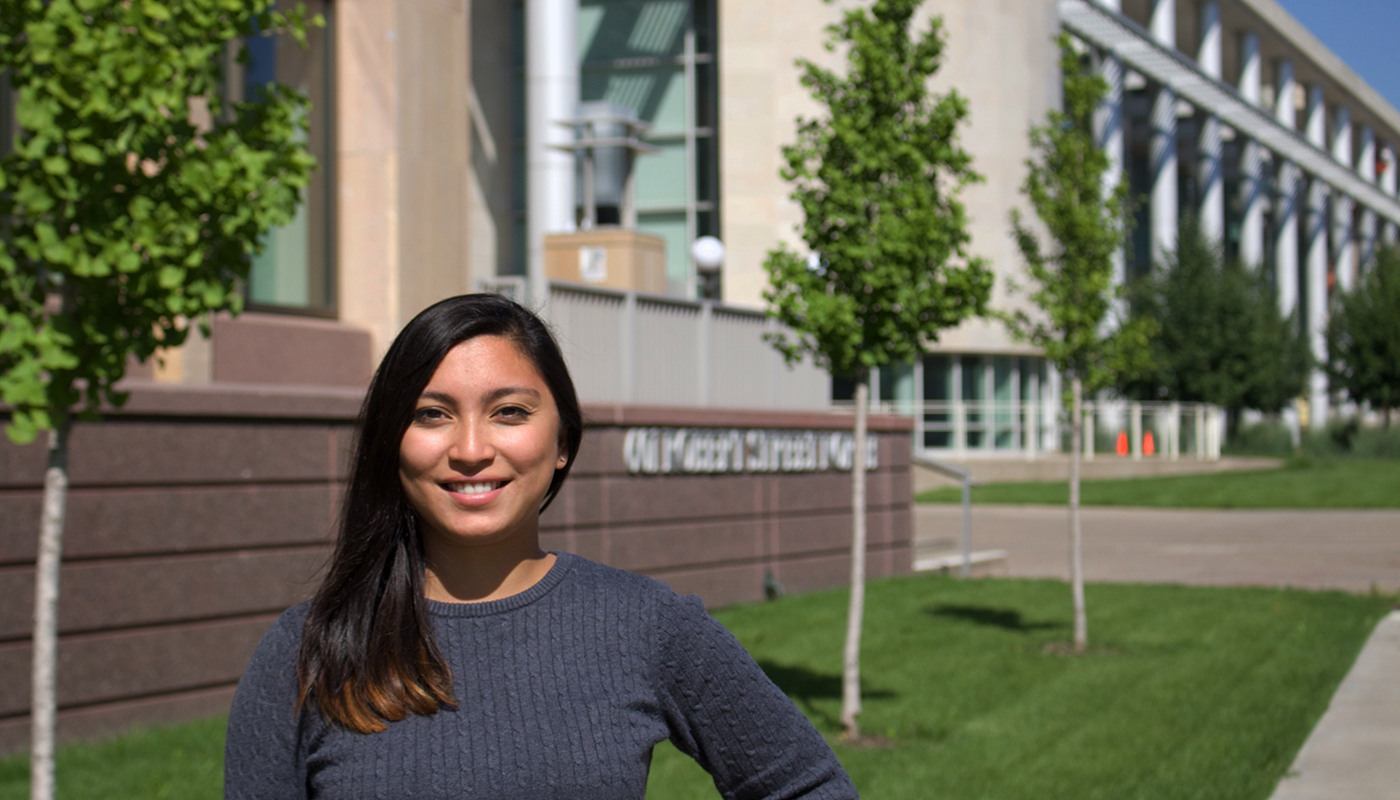
Jessica Tarnowski outside the Minnesota Department of Health where she works as a health program representative.
"I began to understand how environment can affect traits, and as someone who is multicultural, learning about all of the factors that contribute to hereditary diseases was especially compelling.”
Growing up on the shore of Lake Superior, Jessica Tarnowski spent time exploring the natural world with her older brother, John. They threw rocks into the lake, dug holes in the towering snowbanks and asked questions, lots of questions.
“My mom encouraged our curiosity. She always tried to give an answer or point us in the right direction. I realized I liked to ask questions,” says Tarnowski. “Fostering our curiosity that way drove us toward science.”
Both Tarnowskis ended up studying the biological sciences as undergraduates at the University of Minnesota. John focused on biochemistry (2013) and Jessica on genetics, cell biology and development (2015). But while her brother opted for medical school, Tarnowski is set on a career in public health. She plans to pursue a graduate degree in genetic counseling. She started down that path as an undergraduate while interning with the Minnesota Department of Health’s Newborn Screening Program where she developed community-based communication strategies for reaching the parents of newborns at risk for sickle-cell anemia.
Tarnowski recalls how she first learned about the prevalence of carrier status for sickle cell and cystic fibrosis in her high school biology class. “I was really intrigued at the time. Why did these traits come about? I began to understand how environment can affect traits, and as someone who is multicultural learning about all of the factors that contribute to hereditary diseases was especially compelling.”
Sickle-cell anemia is particularly prevalent in the West African immigrant community and among African Americans. Tarnowski says that community stigma and misconceptions around sickle cell make it especially challenging to reach families who may be afraid or ashamed to access information and services. But it’s a challenge she is more than up to. Post-graduation she took a job as a health program representative in the area of hemoglobinopathies in the Department of Health. She connects families impacted by diseases such as sickle-cell anemia to counseling services and community education resources.
“I have always been passionate about science and helping people,” says Tarnowski. “Team-based learning and discovery were a big part of my CBS experience, and that ease working with others is really important in my current role. Knowing how to use the skills of peers, develop leadership and balance skill sets really does result in a better outcome.”
As an undergraduate, Tarnowski was student co-leader of the award-winning Gopher iGEM team. The team was recognized at the international synthetic biology competition, held each year at MIT, for developing a device that uses genetically engineered microbes to remove mercury from contaminated water. Watch a video about the project.
– Stephanie Xenos/August 2015